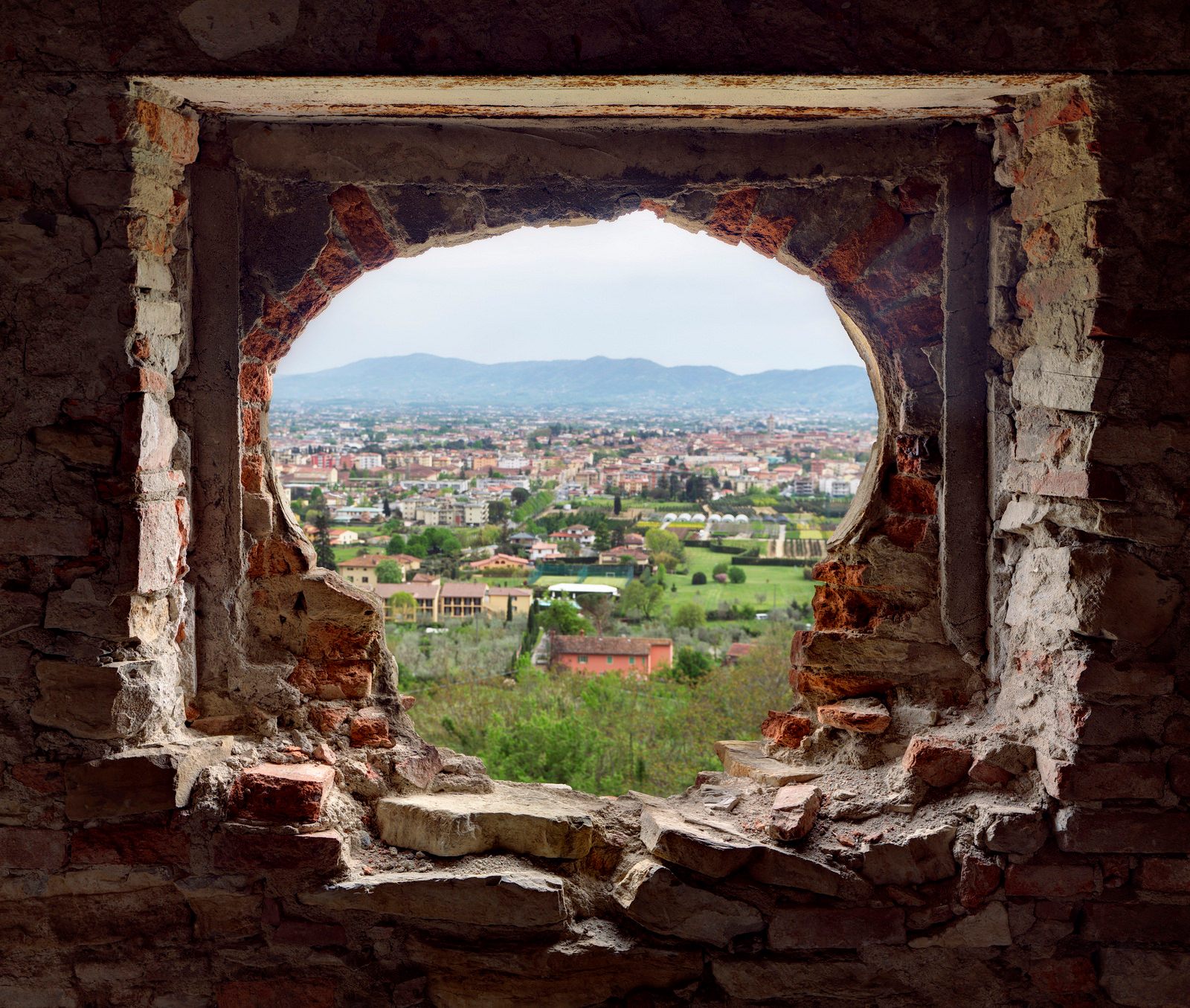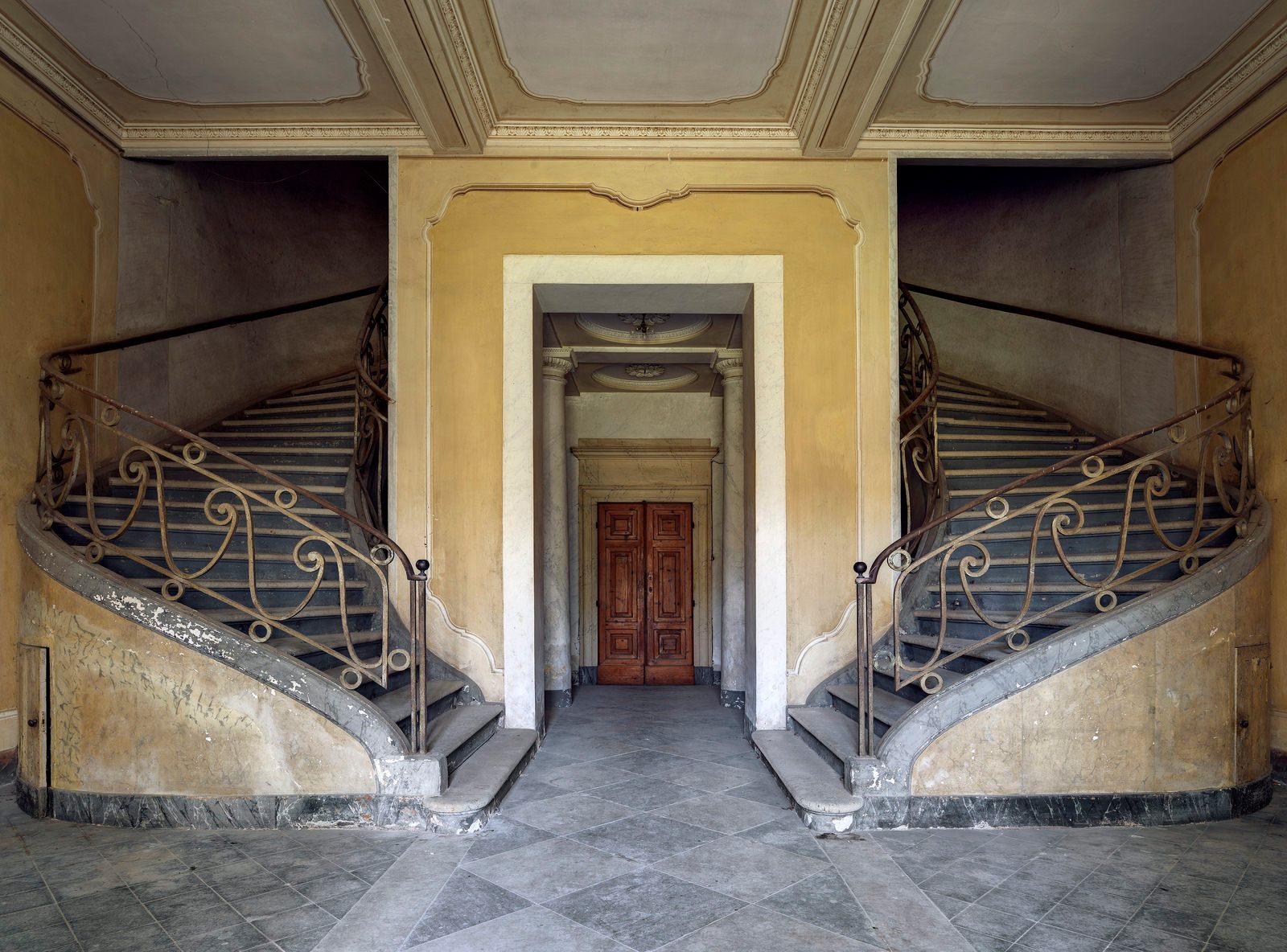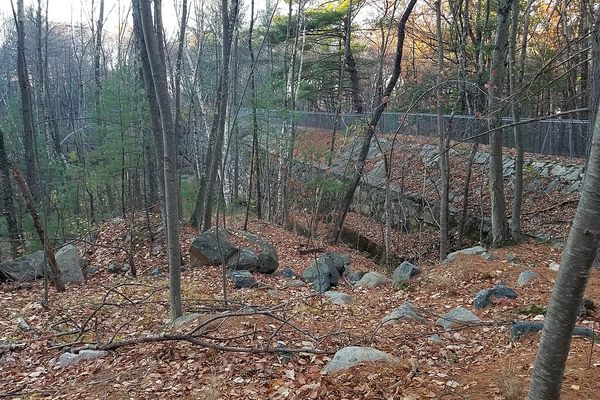Forgotten Heritage: Exploring Italy’s Abandoned Castles, Towers and Hospitals
 Inside an industrial tower in Northern Italy, looking straight down to the base of the tower to looking up slightly to the central skylight. (Photo: Forgotten Heritage Photography)
Inside an industrial tower in Northern Italy, looking straight down to the base of the tower to looking up slightly to the central skylight. (Photo: Forgotten Heritage Photography)
As the man behind the camera at Forgotten Heritage Photography, Matt Emmett has ventured into abandoned buildings of every stripe: long-shuttered mills, subterranean cisterns, and rust-encrusted power stations, in his native UK and beyond. Guided by a mission to capture the aesthetics, character, and history of each building, Emmett’s work reveals the often stunning sights that lie beyond the chain-link fences and “No Trespassing” signs.
Emmett recently traveled to Italy to explore abandoned sites. Here is what he found—all photo captions are straight from his descriptions of each place.
Atlas Obscura: What made you choose Italy to explore?
Matt Emmett: There were quite a few abandoned locations I had been itching to shoot over there for a quite some time. A few photographers I knew had recently done a trip to Italy and the resulting images pushed me into action. Italy has a nice mix of crumbling villas, chapels and asylums, contrasted with some good quality, large scale industrial plants.

A spiral staircase in an abandoned castle in Northern Italy. (Photo: Forgotten Heritage Photography)
Which parts of the country did you visit?
The trip started in the Florence area for the first day, moved onto the Bologna / Ferrara area and then the last two days were spent further north in the countryside around the Torino area. The locations are usually found outside of the cities themselves and so you don’t get to experience the normal sightseeing spots. Personally speaking, not sharing a beautiful and atmospheric location with thousands of other people is infinitely preferable.

The broken remains of what was once the private chapel of a grand residence in rural Italy. (Photo: Forgotten Heritage Photography)
What were you most looking forward to seeing? How did it compare to your expectations?
There is a large manicomio (psychiatric hospital) in a small northern town that has been closed since 1981. A large three storey building situated around two large open courtyards (one each for male and female patients) surrounded by patient wings, medical suites and administration blocks. The interior is incredibly beautiful with light drenched corridors, crumbling plaster, peeling paint and much foliage growing up the walls and in through windows. Much of the medical equipment, like the dental and ECT suites are still in-situ. From a photographic point of view, there are a lot of shots inside and it did not disappoint. We spent over four hours inside and could have spent much longer but the next location was calling us.
 Row upon row of wooden cupboards in an abandoned asylum. (Photo: Forgotten Heritage Photography)
Row upon row of wooden cupboards in an abandoned asylum. (Photo: Forgotten Heritage Photography)

Medical suite equipment left behind in an abandoned asylum. (Photo: Forgotten Heritage Photography)
 Open air inner quadrangles in a large ex-psychiatric hospital in Northern Italy. (Photo: Forgotten Heritage Photography)
Open air inner quadrangles in a large ex-psychiatric hospital in Northern Italy. (Photo: Forgotten Heritage Photography)
What surprised you?
Just how much more beautiful the locations were once I was there, finally standing within the images I had seen online, that’s always quite a cool moment, almost a kind of pilgrimage.
What was the process of getting access like?
In most cases the buildings are fairly easily accessed, but only if you have prior knowledge of where the way in is. Sometimes a little climbing is involved or a crawl along a pipe run in a basement. For the important locations you really don’t want to miss it’s often wise to go in just before dawn.
 The view from an abandoned Villa across a town in Northern Italy. (Photo: Forgotten Heritage Photography)
The view from an abandoned Villa across a town in Northern Italy. (Photo: Forgotten Heritage Photography)
Any run-ins with the law?
No difficulties or run-ins with official law enforcement but we did get trapped in a location whilst we hid from a security team that obviously knew we were there. They swept the large building four times whilst we hunkered down in a dark attic space to wait it out. At one point someone climbed the steps to the hatch and lit up the attic with a torch whilst we pressed up tight behind several brick support pillars. We were inside the attic for over four hours! Exciting and scary all at once.
Which was the most interesting abandoned location to explore, and why?
A large ex-Casino complex that was isolated way out in a rural location in Northern Italy. The surrounding gardens and mood that hung over the place was fantastic, we arrived on a warm day with bright blue cloudless skies overhead, it was very still and quiet besides the constant sound of cicadas drifting in the windows as we shot, magical! I had only seen one shot that I could remember and once inside we discovered that it was actually a gold mine for photography. Storage areas, kitchens, beautiful corridors, a small chapel, a grand staircase and ornate wood panelled rooms. A very beautiful but surprisingly rich site compared with what I thought I knew of it prior to arriving.

A grand double staircase in an abandoned ex casino complex. (Photo: Forgotten Heritage Photography)
What’s next on the exploration list?
I regularly have things going on in the UK and northern Europe, but I plan on doing some shoots in the US at some point, in the Denver area to start me off. Some ghost towns in the mountains and a few other places I have heard about from a US contact.

The exterior of the industrial tower. (Photo: Forgotten Heritage Photography)
 Foliage encases a barred window in the old asylum building in Northern Italy. (Photo: Forgotten Heritage Photography)
Foliage encases a barred window in the old asylum building in Northern Italy. (Photo: Forgotten Heritage Photography)

A fresco-adorned room within an abandoned castle. (Photo: Forgotten Heritage Photography)
Find more of Matt’s photos of abandoned sites at the Forgotten Heritage Facebook page, Twitter account, and on forgottenheritage.co.uk.














Follow us on Twitter to get the latest on the world's hidden wonders.
Like us on Facebook to get the latest on the world's hidden wonders.
Follow us on Twitter Like us on Facebook